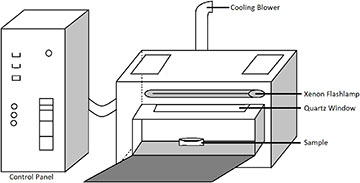Science and technology trends: new food disinfection technology
For a long time, the field of food engineering usually uses low-intensity ultraviolet rays to kill microorganisms harmful to human body. Recently, researchers at Pennsylvania State University in the United States developed a food disinfection technology based on high-intensity pulsed ultraviolet light that can quickly eliminate pathogens in food.
This technology can quickly eliminate pathogens in food. Unlike the low-intensity UV, the pulsed light method takes a long time to kill microorganisms. In addition, the method can effectively replace the conventional chemical disinfectant or water-based disinfectant under the appropriate environment.
Project research leader: Joshua R Cassar said that like all other emerging technologies, this technology will continue to develop and is expected to be applied to health facilities in various industries.
Ali demirci and his colleagues used a desktop pulsed light system with three 16 inch xenon flashlights in the experiment.
Each flash lamp can provide light of different wavelengths, in which a lamp: 380 – 1100nm, B lamp: 235 – 1100nm, and C lamp: 190 – 1100nm. The system generates three optical pulses per second with a pulse width of 360 µ s.
Before the experiment, the researchers recorded the energy value and spectral trajectory of each flash.

Fig. 1: schematic diagram of high intensity ultraviolet pulse light sterilization system.
In order to determine the bactericidal effect, the researchers conducted experiments on a series of common foodborne microorganisms, including bacteria with different cell wall structures (gram positive or gram negative), including Escherichia coli, Salmonella typhimurium, Listeria monocytogenes, Bacillus cereus, Aspergillus niger and Penicillium roxburghii.
Demirci’s team found that gram negative bacteria (E. coli and Salmonella typhimurium) seemed to be more sensitive to pulsed light than gram positive bacteria (Listeria monocytogenes and Bacillus cereus).
They also observed that both Gram-negative bacteria and Gram-positive bacteria were more sensitive to pulsed light than fungal spores and bacterial endospores.
In addition, the researchers treated E. coli cultures with pulsed light emitted by b-lamps equipped with ultraviolet blocking filters, which can emit visible light (VIS; 380 – 740nm), near-infrared (NIR; 700 – 1080nm) and Vis-NIR (400 – 1080nm) spectra.
For these three spectra, the researchers observed a moderate reduction in live E. coli cells after 75 UV free pulses. They also confirmed by transmission electron microscopy that the damage to cell morphology after treatment with UV free pulsed light was negligible.
By comparing the experimental results of the broad spectrum and the non ultraviolet spectrum, the team realized that the sterilization reaction to the pulsed light was different depending on the microbial species, mainly due to the ultraviolet part of the spectrum.
The team’s next research will focus on characterizing the reaction of more microorganisms under pulsed light, and increase the relative inclusiveness of UV spectrum while reducing visible and near-infrared spectra in the upcoming pulsed light experiments.
The researchers emphasized that pulsed light sterilization technology has broad application prospects in the field of food safety, and hoped that the technology could be quickly adopted by the food industry.



